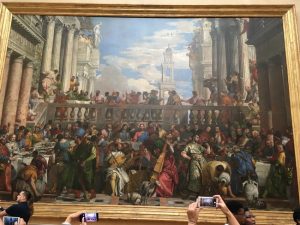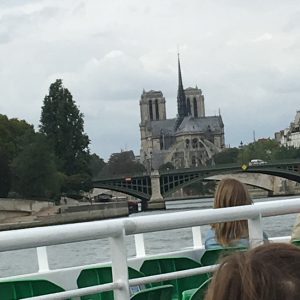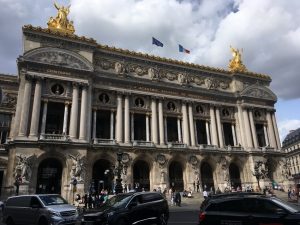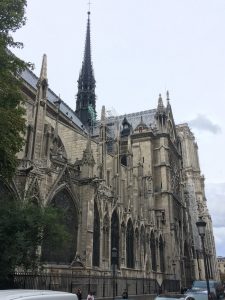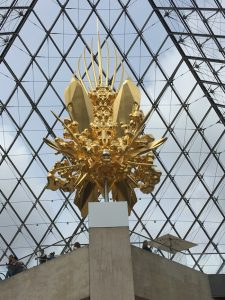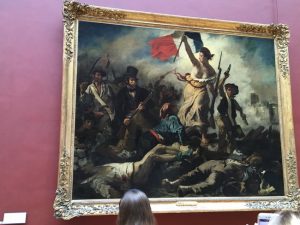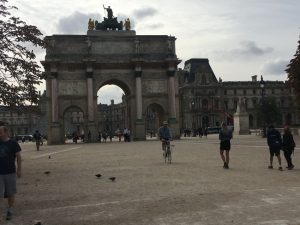Tag Archive
activity architecture art artist building Canada children city CostSaver downtown drive i-95 entertainment Europe event exhibit family festival Florida food fun historic History landmark local Museum music Nature New Zealand Ontario roadtrip sculpture Seattle show sights sightseeing tour tourist Trafalgar travel travelblogger view Washington Washington State water world
Great Britain, London: Ravens Guarding the Tower of London
.
When you visit the Tower of London, you learn the superstition about why there always are ravens guarding it. Look for the raven master near the line to go in to the Crown Jewels. He’s happy to chat with you.
mov #2391
France, Paris: Crowning of Napoleon
.
In the Louvre, one of the largest paintings at 33 ft. x 22 ft. was unsurprisingly commissioned by Napoleon himself of his 1804 coronation. His official court painter Jacques-Louis David, created a Facebook of French politicians, Napoleon’s family and, of course a selfie of the painter himself.
France, Paris: Paris Opera Charles Garnier Sculpture
.
This monument on the side of the Opera de Paris is dedicated to its architect, Charles Garnier. We loved the idea of putting the seating plan front and center.
France, Paris: Notre Dame Cathedrale from the Seine
Austria, Innsbruck: Crystal Skull Swarovski Crystal Worlds
France, Paris: Opera de Paris
.
World over it’s known as the Opera de Paris however it does have a real name, the Palais Garnier named for its architect, Charles Garnier, and was built from 1861 to 1875. It became even more famous because of Gaston Leroux’s 1910 novel The Phantom of the Opera and, especially because of the later adaptations in films and the popular 1986 Broadway musical. It is as much a symbol of Paris as Notre Dame Cathedral, the Louvre, or the Sacré-Cœur Basilica.
France, Paris: Notre-Dame Cathedral
.
Notre-Dame Cathedral is a architectural masterpiece and you really need to walk around the outside of it to appreciate it all. It was begun in 1160 and completed by 1260. Just think about how long ago that was and here it still stands so magnificently; What are we building today that will last that long? This medieval Catholic cathedral on the Île de la Cité in Paris is still widely considered to be one of the finest examples of French Gothic architecture with its innovative use of the rib vault and flying buttress, the gargoyles and the enormous and colorful rose windows.
France, Paris: The Throne in the Palace of the Louvre
.
France is celebrating 160th anniversary of diplomatic ties between France and Japan. Japonismes 2018: Les Ames en Resonance, will run through February 2019 involving exhibitions and events promoting Japanese art and design. Visual artist Kohei Nawa’s monumental sculpture “Throne” has one of the most prestigious spots in Paris: the Louvre. “I see the location as a connecting portal of modern lifestyles and the past, says Nawa, the Kyoto-based artist whose 10.4-meter-tall work is installed under I.M. Pei’s 1989 glass pyramid in the Louvre’s main courtyard.
The making of the throne itself involved both the past and the present. It was designed using state-of-the-art 3D modeling software and carved by robotic arms, however its gleaming gold leaf exterior was hand-applied by Japanese traditional craftspeople.
“The maximum capacity the pyramid can hold is 3 tons, so I told the museum I would ship a sculpture weighing exactly 3 tons,” says Nawa about the work’s creation. “I think they were bit worried, but after it went up, the Louvre’s curator, Martin Kiefer, told me the sculpture looks like it’s been at the pyramid all along.”
It’s not Nawa’s first “Throne” and it is different in that in previous iterations there was usually a small child seated within Nawa’s unique abstract shapes and geometric forms. For the Louvre, the seat is strikingly empty.
“Thrones are for kings. Here, the seat is for the authority that will eventually take over the control in the future. I left the seat empty to emphasize the invisibility,” says Nawa.
It sounds ominous, but Nawa goes on to explain that he foresees the type of power we see controlling today’s politics, economy and lifestyles as disappearing in the future, and in its place will be a very different form of authority. It could be artificial intelligence and advanced computer technology that will “take the throne,” he suggests, while we blindly follow, something that history has shown us that humans have had the tendency to do.
To us it is interesting that he chose a throne to be placed in this, the Palace of the Louvre, where French Kings sat on their thrones. Francis I chose this edifice as the residence for French kings and where it remained thus until good old King Louis XIV decided to move to Versailles and this building was then used to store his pretty things.
France, Paris: Liberty Leading the People in the Louvre
.
Though foreigners flock to see the Mona Lisa, to the French, the most important painting in the Louvre – the unofficial national painting of France is this one, Liberty Leading the People by Delacroix. The bare-breasted female figure, who is called Marianne became a symbol of Liberty for the French Republic. Though Delacroix painted the July Revolution of 1830, the broken bodies beneath the flag depict the 40 years of civil war, political and social upheavals necessary to conquer the monarchy in order to win a representative government. The huge 8′ by 10′ scale adds to the dramatic patriotism.
France, Paris: NOT THE Arc de Triomphe
.
